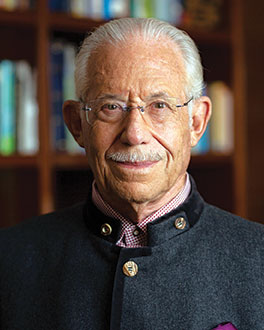 Long COVID—symptoms that drag on long after someone gets ill with the coronavirus—has many in long term and post-acute care experiencing déjà vu. Diagnostic challenges, questions about treatments, and a limited body of research—these are the same issues they faced at the start of the pandemic over a year ago.
Long COVID—symptoms that drag on long after someone gets ill with the coronavirus—has many in long term and post-acute care experiencing déjà vu. Diagnostic challenges, questions about treatments, and a limited body of research—these are the same issues they faced at the start of the pandemic over a year ago.
However, while there are still questions, providers have learned much from the pandemic that will help centers navigate the challenges of long COVID and implement and sustain standards, processes, protocols, and interventions that maximize outcomes and quality of life for residents with this condition.
What is Known
Long COVID is real. Nonetheless, there are still many unknowns, and research is ongoing. “Particularly if someone has been intubated, it takes a long time to recover. It may take many months,” says William Haseltine, PhD, president of ACCESS Health International. “We’ve come to realize that about one in five people infected by COVID suffers consequences well beyond a six-week period.”
Long COVID symptoms are also known as PASC, or post-acute sequelae of SARS-COV-2. However, they are collectively more commonly referred to as long COVID, and people living with this condition are often called “long haulers.” These individuals no longer have live COVID in their bodies, and, if tested, they would test negative for the coronavirus. Yet they are still suffering as a result of their COVID infection.
It’s encouraging to know that health providers are not starting at square one with long COVID. Several common signs and symptoms of the condition have been identified. These include fatigue, shortness of breath or breathing difficulties, cough, joint or chest pain, memory or concentration problems, trouble sleeping, and muscle pain or headache.
Other signs include fast or pounding heartbeat, loss of smell or taste, depression or anxiety, fever, and dizziness on standing.
 Leslie Eber, MD, CMD, medical director of Orchard Park Health Care Center and attending physician with Rocky Mountain Senior Care in Colorado, says, “My experience is that our geriatric patients may present with different long COVID symptoms. The most prevalent symptoms I’ve seen are weight loss and anorexia.”
Leslie Eber, MD, CMD, medical director of Orchard Park Health Care Center and attending physician with Rocky Mountain Senior Care in Colorado, says, “My experience is that our geriatric patients may present with different long COVID symptoms. The most prevalent symptoms I’ve seen are weight loss and anorexia.”
However, she points out, “We don’t have a clear algorithm of symptoms now or a clear test to determine if someone definitively has long COVID.”
Respiratory Underpinnings
COVID-19 is thought of as primarily a respiratory illness, and long COVID can affect the lungs long term. For instance, the kind of pneumonia often experienced by COVID patients can cause long-term damage to tiny air sacs in the lungs, resulting in scar tissue that can contribute to long-term breathing difficulties.
However, COVID-19 also can cause long-term damage to other organs. Haseltine explains, “Subacute inflammation from a viral infection can cause changes to the vascular system that affect the brain.”
“We have seen cognitive decline get worse in some COVID survivors,” says David Nace, MD, MPH, clinical chief of geriatric medicine and director of long term care in the Division of Geriatric Medicine at the University of Pittsburgh. “Organizational skills and executive function also can be affected.”
This inflammation also can lead to central nervous system damage through inflammation factors that affect neurofunction, Nace says. Even in young people, COVID can cause strokes, seizures, and Guillain-Barre syndrome (which causes temporary paralysis). It also may increase some people’s risk of developing Parkinson’s or Alzheimer’s disease, physicians report.
 Cardiac complications also are possible, and some COVID survivors have been seen to have lasting damage to the heart muscle, which may increase the future risk of heart failure or other cardiac issues.
Cardiac complications also are possible, and some COVID survivors have been seen to have lasting damage to the heart muscle, which may increase the future risk of heart failure or other cardiac issues.
“We have come to realize that this virus gets in, suppresses the immune system for enough time, and gets out,” Haseltine says. “Only then does the immune system realize something is wrong and everything goes haywire.”
As with COVID-19, there are misconceptions about long COVID. “The most common of these is that it only affects older patients and those who were hospitalized for COVID. In fact, it can happen to younger and asymptomatic patients as well,” says Haseltine.
Is it Long COVID or Something Else?
While it may not be hard to recognize the signs and symptoms of long COVID in a resident, “it’s difficult to determine if those signs actually are related to long COVID,” Haseltine says. This is particularly true in older patients, who often have multiple illnesses and conditions, some with symptoms that are similar to long COVID. As a result, he says, “We don’t have well-defined treatment for things like chronic fatigue. That is what we’re working out right now.”
“It’s hard to know for sure if an issue or symptom is due to long COVID or something else,” Nace says. “We don’t have a metric we can point to. We are still learning what long COVID looks like, for instance, what aspects of cognition are affected.” He adds that clinicians need to be mindful that some declines have occurred because of social isolation.
“We can’t just chalk these up as advancing dementia,” he says. “Additionally, we need more studies to help determine what cognitive issues are associated with COVID.”
Nonetheless, the symptoms must be managed, whether they stem from long COVID or some other issue.
“We don’t have enough studies to know how to treat signs of long COVID. But the first step is to make sure there’s nothing else that can be accounting for these types of problems,” Nace says. “You need to determine if you’re dealing with other infections, medication changes or adverse reactions, or any cardiac conditions.”
For cognitive issues and psychological symptoms such as anxiety, he says, “We can take the usual steps to diagnose, manage, and monitor these issues.”
Once a resident is displaying signs of long COVID, a COVID test may or may not be helpful.
“Testing is probably still worthwhile, especially if the resident is in a county with a higher prevalence of infections. We don’t yet know how long vaccine protection will last,” Nace says. Nonetheless, “If someone’s test comes back positive and they’ve never had COVID, we would isolate them and monitor for symptoms.”
Plan For The Future
It’s important to plan ahead. As Nace says, “We already know some states are having upticks in COVID cases, and we may see more activity in the fall. We need to be proactive and prepared to respond if we start seeing more infections.”
All of these recommendations align with guidance coming out of the National Institutes of Health and the Centers for Disease Control and Prevention. “When patients have symptoms, we want to do an appropriate workup, then we want to work with them to manage these symptoms according to their wishes, all with an understanding that long COVID is a possibility,” Eber says. “We need to work within the parameters of their priorities to give them the highest quality of life.”
Eber says clinicians also need to work with families to let them know that long COVID is a possibility but also what other issues could be causing the symptoms. “We need to be honest with them and address their questions and concerns,” she says.
Keep Community Informed
It is important to avoid the miscommunications and gaps in knowledge that were so problematic during the earlier phases of the pandemic. “The key is to be transparent and honest, saying, ‘This is what we know and don’t know, and this may change over time,’” says Nace. “Mistrust comes in when people put out statements with no evidence to support them. And, unfortunately, there are actors out there doing everything they can to sow distrust, discord, and confusion.”
“If we’ve learned nothing else from COVID, we know we have to respect the scientific process,” Eber stresses. “At the same time, we need to be honest and admit that we don’t have all the answers and that diagnosing long COVID can be challenging.”
As there currently is little published research about long COVID in the geriatric and nursing home population, she suggests, “We need to follow the science and keep up with new studies and innovations. But in the meantime, we can fall back on what we know to be true, what works, and what will help our patients.”
At least for the immediate future, vigilance will be necessary. “We’re already seeing patients with long COVID. If we ignore the possibilities and don’t pay attention, that is where we’ll have problems,” says Nace. “We have to study individuals who we suspect of having long COVID and report what we find.”